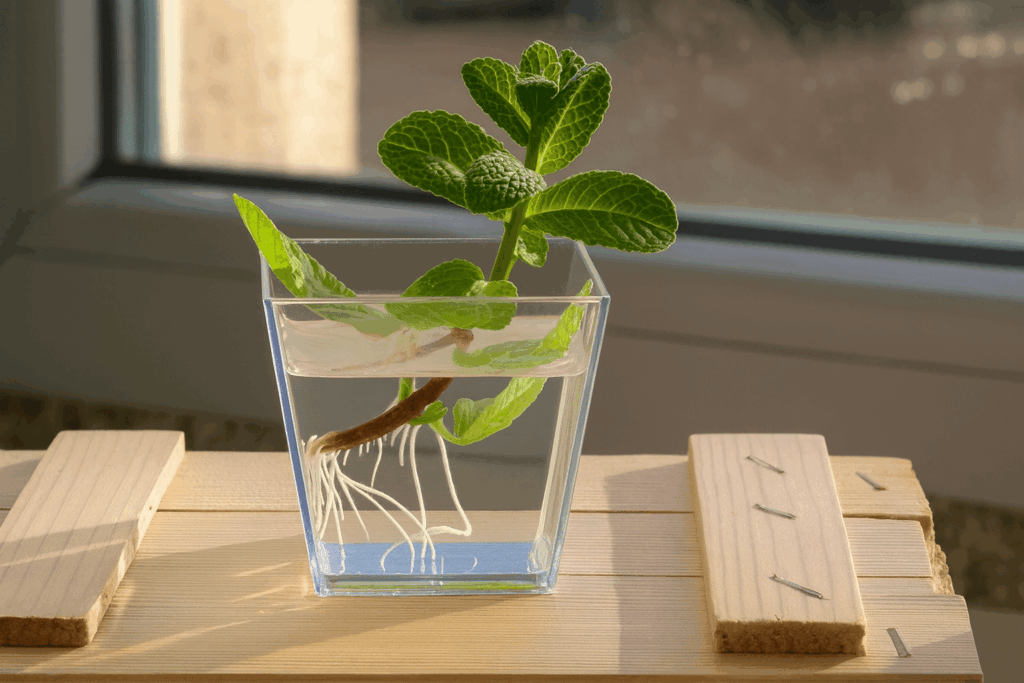Mint is one of the easiest and most rewarding herbs to grow in pots, even if you live in an apartment or have limited space. In fact, mint grows so vigorously that keeping it in a pot is often the best way to control it. This aromatic plant adds freshness to your kitchen, repels pests naturally, and fills your balcony or windowsill with a beautiful fragrance.
Whether you want mint for teas, desserts, or summer cocktails, here’s everything you need to know to grow it successfully in containers.
Why Grow Mint in Pots?
Mint is famously invasive when planted directly in the ground—its roots spread quickly and can take over garden beds. Growing it in pots keeps it contained and easy to manage.
Another advantage is flexibility: you can move the pots around to find the ideal light conditions or bring them indoors during cold months. Plus, you can grow several different varieties side by side without worrying about them mixing together underground.
Choosing Your Mint Variety
Mint isn’t just one plant : there are dozens of varieties, each with a unique aroma and taste. Here are a few worth trying:
- Spearmint: The classic variety for teas and mojitos.
- Peppermint: Strong and cool flavor, perfect for desserts and infusions.
- Chocolate mint: Subtle cocoa scent, great with coffee or desserts.
- Apple mint: Mild and fruity, excellent for salads and cold drinks.
- Strawberry or pineapple mint: Decorative and fragrant options that add color and variety.
All mint types thrive in pots as long as they have good soil and regular watering.

The Right Pot and Soil
Choose a pot at least 20 cm wide and deep, with good drainage holes. Mint has vigorous roots and will quickly fill a small container.
For the soil, use a rich potting mix, ideally one designed for herbs or vegetables, and enrich it with a bit of compost or organic matter. Mint loves nutrient-rich, slightly moist soil. Avoid heavy garden soil, which can retain too much water and cause root rot.
If you’re starting from scratch, it’s much easier to buy a small mint plant or use a cutting from a friend’s plant instead of growing from seed. Mint seeds germinate slowly and often produce weak plants.
How to Plant Mint in Pots
- Prepare drainage: Place a thin layer of gravel, small stones, or clay pebbles at the bottom of the pot.
- Add the soil: Fill with your potting mix, leaving about 2 cm at the top.
- Plant your mint: Gently remove the plant from its nursery pot, loosen the roots a bit, and place it in the center.
- Press and water: Fill in around the roots and press lightly. Water thoroughly after planting to help it settle in.
Mint enjoys moisture, so don’t be afraid to give it a generous first watering. After that, keep the soil slightly damp, not waterlogged.
Caring for Mint
Light
Mint grows best in partial shade—it loves morning sun but appreciates shade during the hottest part of the day. Too much direct sunlight can cause the leaves to yellow or dry out.
Watering
Keep the soil consistently moist. Mint likes water but doesn’t tolerate standing water, so make sure your pot drains well. During hot summer days, you may need to water daily, especially if the pot is small.
Pruning and Maintenance
Regular pruning is the secret to healthy, bushy mint. The more you cut, the more it grows. Don’t hesitate to trim it back hard if it becomes leggy or starts flowering.
Flowering can make the leaves taste a bit bitter, so pinch off flower buds early to encourage fresh new growth.
If your mint develops powdery mildew (a white, dusty coating on the leaves), simply cut the plant down to a few centimeters above the soil and let it regrow. Mint is extremely resilient and will bounce back quickly.
Harvesting and Using Mint
You can start harvesting once the plant is about 10–15 cm tall. Pick individual leaves or cut entire stems just above a leaf node to encourage branching.
The more you harvest, the more mint you’ll get—it loves being trimmed!
Fresh mint is incredibly versatile:
- Brew it into mint tea for a soothing drink.
- Add it to mojitos and cocktails for a burst of freshness.
- Mix it into fruit salads or desserts.
- Chop it into tabbouleh, sauces, or marinades for a bright, herbal note.

How to Propagate Mint (and Get Unlimited Plants!)
One of the best things about mint is how easily it multiplies. Take a healthy stem, about 10 cm long, remove the lower leaves, and place it in a glass of water. Within a few days, you’ll see roots forming.
Once the roots are a few centimeters long, transfer the cutting into a pot with fresh soil. Keep it moist, and soon you’ll have a new, thriving mint plant, completely free!

Mint is the perfect plant for beginner gardeners and seasoned growers alike. It’s hardy, forgiving, and endlessly useful. Give it water, partial shade, and regular pruning, and it will reward you with fresh leaves all season long.
Whether you’re making mint tea, mojitos, or just enjoying its scent on your balcony, this little herb will bring freshness to your space and your kitchen. And once you start propagating it, you’ll never run out—fresh mint for life ! 🌿

